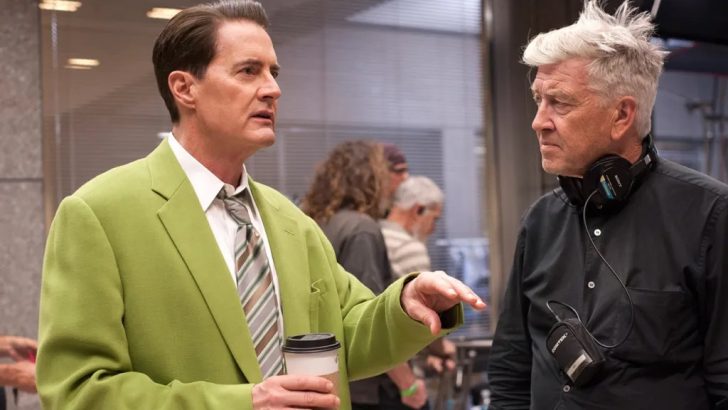David Lynch (1946 -2025) was not just a filmmaker. He was an architect of dreams. From his debut masterpiece “Eraserhead” to the genre-bending TV phenomenon “Twin Peaks,” Lynch didn’t just tell stories. Instead, he created surreal worlds with his creative genius.
His name, David Lynch, now synonymous with surrealism and unease, became shorthand for a unique kind of cinematic alchemy where the ordinary became extraordinary and nightmares felt oddly comforting.
To talk about David Lynch is to go on a journey through shadowy hallways, red curtains, and whispered secrets. His art was felt, haunting viewers in ways that linger long after the credits rolled.
The Unshakable Vision of David Lynch
David Lynch’s first feature, “Eraserhead” (1977), burst onto the scene like nothing else. The sound design alone was revolutionary – a cacophony of industrial noise and silence that seeped into your bones. The visuals? Startling and grotesque yet heartbreakingly human. Lynch didn’t just push boundaries. He redefined them.

What made “Eraserhead” eternal was not just its avant-garde aesthetic but its raw emotional resonance. The film captured the fear and alienation of parenthood, wrapped in a surreal package. It was the kind of movie you couldn’t shake, and Lynch’s name became a byword for daring originality.
“The Elephant Man” is a Creative Genius of David Lynch!
Following the cult success of “Eraserhead,” David Lynch made “The Elephant Man” (1980), a film that showcased his versatility. Based on the true story of John Merrick, a man with severe physical deformities, the movie balanced Lynch’s flair for the bizarre with deep compassion.
It was haunting and humane, a delicate dance few filmmakers could pull off.
Unlike his debut, “The Elephant Man” was a mainstream success, earning eight Oscar nominations. Yet, it never felt like Lynch compromised. The haunting black-and-white cinematography and the heart-wrenching performances bore his unmistakable stamp.
“Blue Velvet,” A Beautiful Nightmare
David Lynch didn’t just make movies. He pulled you into his psyche. Nowhere is this more evident than in “Blue Velvet” (1986). The film begins with an idyllic suburban scene – bright flowers and white picket fences. But beneath this façade lurks a world of unspeakable violence and desire.
With “Blue Velvet,” Lynch explored the duality of human nature. The contrast between innocence and depravity was startling yet magnetic.
The Phenomenon of “Twin Peaks”
When David Lynch brought “Twin Peaks” to television in 1990, he changed the medium forever. The show was a kaleidoscope of emotion, surrealism, and small-town quirks. Who killed Laura Palmer? That question captivated millions, but the real draw was Lynch’s ability to weave the mundane with the otherworldly.

Even decades later, its influence can be seen in countless series that dare to blur the lines between genres.
“Mulholland Drive,” Lynch’s Hollywood Hallucination
By the time “Mulholland Drive” (2001) arrived, David Lynch had become a genre unto himself. The film was quintessential Lynch – a noir fever dream that unfolded like a puzzle with missing pieces. It was seductive, disorienting, and unforgettable.
At its heart, “Mulholland Drive” was a tale of ambition and heartbreak in Hollywood. But Lynch’s treatment elevated it into a meditation on identity and reality. Every shot, every whispered word, carried a sense of foreboding. Watching it felt like slipping into someone else’s dream, only to realize you are trapped.
